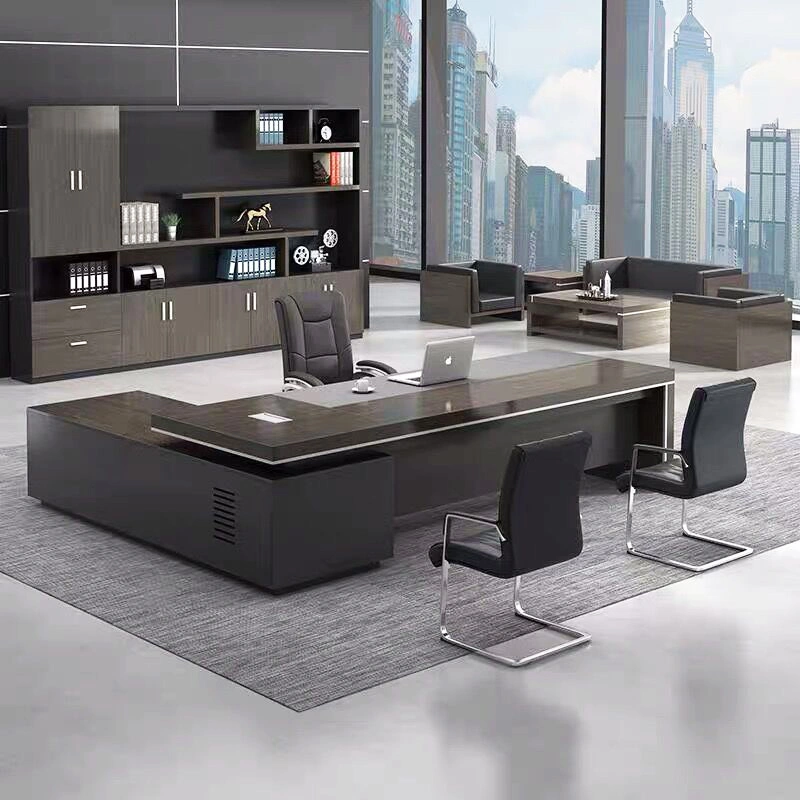In today’s dynamic business world, an executive desk serves as more than just a piece of office furniture; it is a symbol of leadership, productivity, and professionalism. The choice of an executive desk can significantly impact not only the aesthetic appeal of an office but also its functionality. Finding harmony between form and function in reception desk and executive desks is a crucial task for both executives and interior designers.
The Importance of Executive Desks
Executive desks are more than just workstations; they are command centers where leaders make decisions, craft strategies, and communicate their vision. As such, these desks must strike a balance between form and function.
Form: Aesthetic Appeal
The form of an executive desk refers to its visual design, aesthetics, and how it fits into the overall office decor. A well-designed executive desk can elevate the entire workspace, creating a more inviting and inspiring environment.
Materials and Finishes: The choice of materials and finishes greatly influences the form of an executive desk. High-quality woods like walnut or cherry provide a classic, timeless look, while sleek, modern designs often incorporate glass, metal, and other contemporary materials.
Design Styles: From traditional, ornate designs to minimalist, sleek profiles, there’s a wide range of design styles to choose from. The chosen style should align with the overall office decor and convey the desired image and atmosphere.
Customization: Many executive desks offer customization options, allowing you to select finishes, sizes, and features that suit your unique preferences and requirements. Customization is an excellent way to ensure the desk’s form aligns perfectly with your vision.
Function: Practicality and Ergonomics
While aesthetics are essential, the primary function of an executive desk is to support productivity and comfort. An executive desk must be designed with practicality and ergonomics in mind.
Workspace: Adequate workspace is crucial for executives who deal with multiple tasks simultaneously. A spacious desk surface allows for better organization and the ability to spread out materials when needed.
Storage: Executives often handle a significant amount of paperwork, files, and office supplies. Well-designed executive desks incorporate ample storage solutions, such as drawers, cabinets, and shelves, to keep the workspace tidy and organized.
Ergonomics: The ergonomics of an executive desk are critical for long hours of work. Adjustable heights, comfortable chair pairing, and proper cable management are elements that ensure ergonomic functionality.
Technology Integration: In the modern digital age, executive desks must accommodate technology seamlessly. Cable management systems, built-in power outlets, and wire-routing solutions are essential to maintain a clean and clutter-free workspace.
Striking the Balance
Balancing form and function in executive desks is an art. Here are some key considerations to achieve this harmony:
Purpose and Personality: Understand the executive’s work style, preferences, and personality. This insight will guide the selection of a desk that not only matches their taste but also executive table price philippines complements their work habits.
Space Planning: Consider the available office space and layout when choosing an executive desk. The desk should fit comfortably within the room without overwhelming it.
Collaboration Zones: If the executive’s role involves regular meetings and collaborations, consider creating a designated collaboration zone within the office layout. This can help separate the functional aspects of the desk from the more formal meeting areas.
Complementary Elements: Ensure that other office furniture, such as chairs, lighting, and storage units, complements the chosen executive desk in terms of design and functionality.
Future-Proofing: Choose a desk that can adapt to future changes and technological advancements. Modular and versatile designs can accommodate evolving office needs.
Case Study: The Ideal Balance
Imagine an executive, Sarah, who leads a cutting-edge tech company. She values innovation, ergonomics, and modern aesthetics. In her office, she has a custom-designed executive desk that perfectly balances form and function:
Materials and Finish: The desk features a sleek, minimalist design with a white lacquer surface and brushed aluminum accents, reflecting a modern and innovative spirit.
Workspace: The desk is large enough to accommodate multiple monitors and provide ample space for brainstorming sessions with her team.
Storage: It includes built-in storage cabinets for files and office supplies, maintaining a clutter-free workspace.
Ergonomics: Sarah’s desk is equipped with an adjustable sit-stand mechanism, allowing her to switch between sitting and standing throughout the day for better health and productivity.
Technology Integration: Integrated wireless charging pads and cable management systems keep her devices powered and cords neatly organized.
Sarah’s executive desk not only embodies her company’s values and her personal taste but also enhances her daily workflow.
Finding harmony between form and function in executive desks is essential to create an office space that inspires productivity, professionalism, and comfort. By carefully considering the aesthetics, practicality, and ergonomic features of an executive desk, individuals and interior designers can create workspaces that reflect the personality and needs of executives while optimizing their work environment. In this balance, executives can truly command their space and make it a hub of innovation and success.





